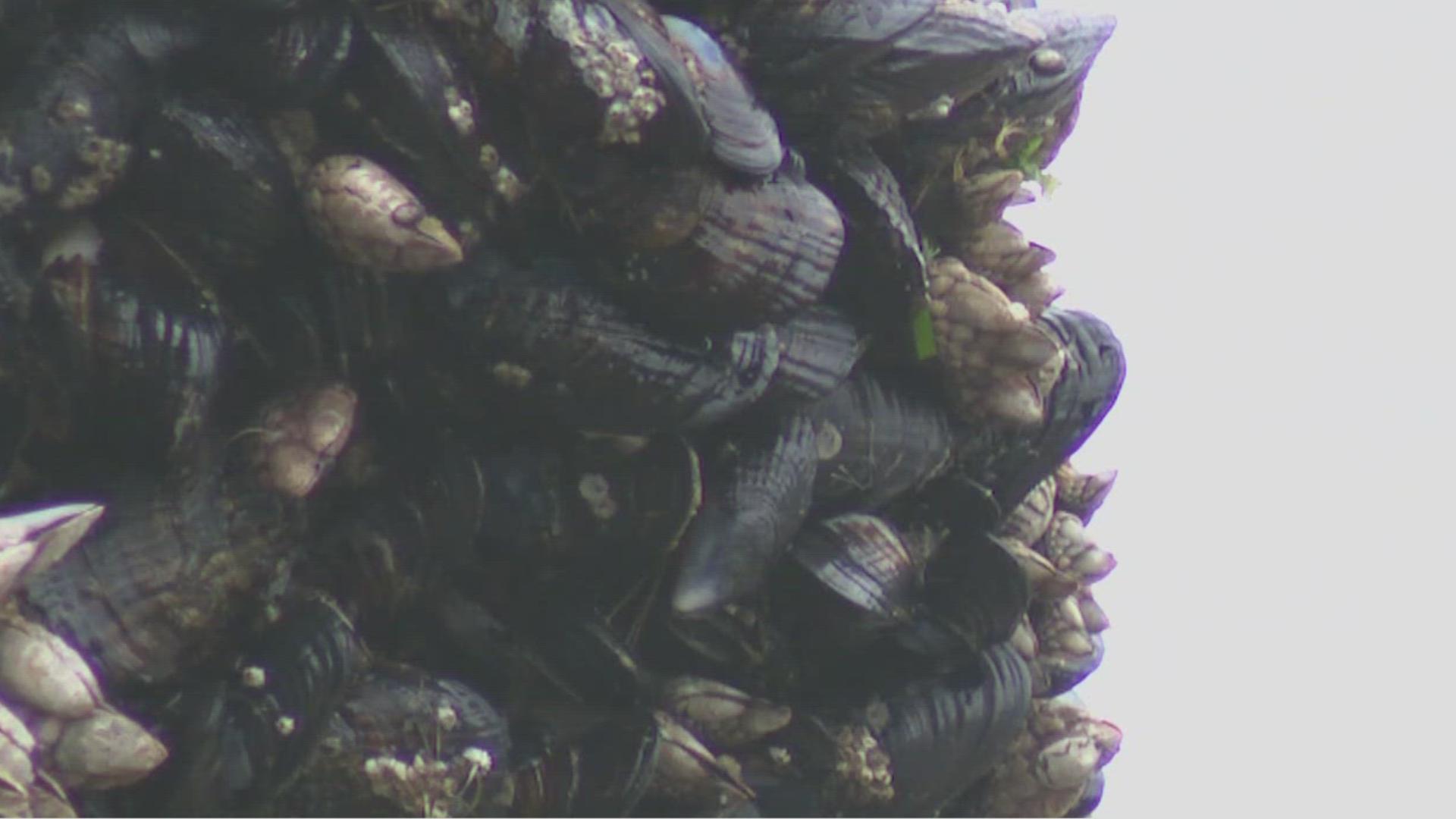SEASIDE, Ore. — Oregon health officials have warned anyone who gathered mussels from certain beaches on the northern Oregon Coast to toss them out after reports of people sickened by a shellfish-borne biotoxin.
At least 20 people fell ill after eating mussels gathered over the weekend at Short Beach near Oceanside in Tillamook County and at Hug Point near Seaside in Clatsop County, according to the Oregon Health Authority (OHA). An unknown number were hospitalized, but the OHA said there have been no reported deaths.
The patients reported symptoms of paralytic shellfish poisoning (PSP), which can cause numbness of the mouth and lips, nausea, vomiting, diarrhea, weakness and in severe cases shortness of breath or irregular heartbeat.
Anyone who experiences any these symptoms should immediately contact a health care provider, or call the Oregon Poison Center for advice at 800-222-1222, OHA said.
“We have two messages: If you have any mussels gathered since Saturday from beaches within the area of coastline that ODFW and ODA closed to harvesting that you are preparing for a meal or keeping in the freezer for a later time, throw them out now and do not feed them to pets,” said Dr. Emilio DeBess, epidemiologist at the Oregon Public Health Division’s Acute and Communicable Disease Prevention Section. “And if you have eaten any of these mussels and are feeling ill, see a doctor right away.”
Marine algae produces saxitoxins, which can contaminate shellfish like scallops, mussels, clams, oysters and cockles, as well as some fish and crabs, according to the Centers for Disease Control and Prevention. Consuming contaminated shellfish can result in PSP.
For now, DeBess says that only mussels are impacted, and other shellfish are in the clear, which is great news for locals Shawn and Daniel Freitas.
“We actually went clamming on Sunday and picked two limits and ate all of them, and nobody got sick,” said Shawn.
The pair and their families were celebrating a milestone birthday and collecting agates — and said they’re lucky to have changed their minds about hunting for more than just rocks.
“I’m happy we did not go mussel hunting yesterday or today. We thought about it — we were very close,” said Daniel.
Signs of shellfish poisoning usually appear 30 to 60 minutes after a person eats a toxic shellfish, and it can be deadly, especially for children.
“For right now, walk on the beach, enjoy the fresh air — but do not collect mussels,” reiterated DeBess.
Usually, symptoms appear between a half-hour and an hour after eating toxic shellfish. PSP can be deadly, particularly for children.
According to the OHA, PSP is the most common and most severe form of shellfish poisoning. It most commonly occurs in temperate waters of the Atlantic and Pacific coasts of North America.
Oregon officials closed a stretch of the coast from Seal Rock State Park north to Cape Lookout on May 23 due to high levels of saxitoxins. That closure was extended all the way north to the Washington border on Sunday.
DeBess told KGW that the OHA is expecting more cases. They're working on gathering more information and will share it with the public on Thursday or Friday.

